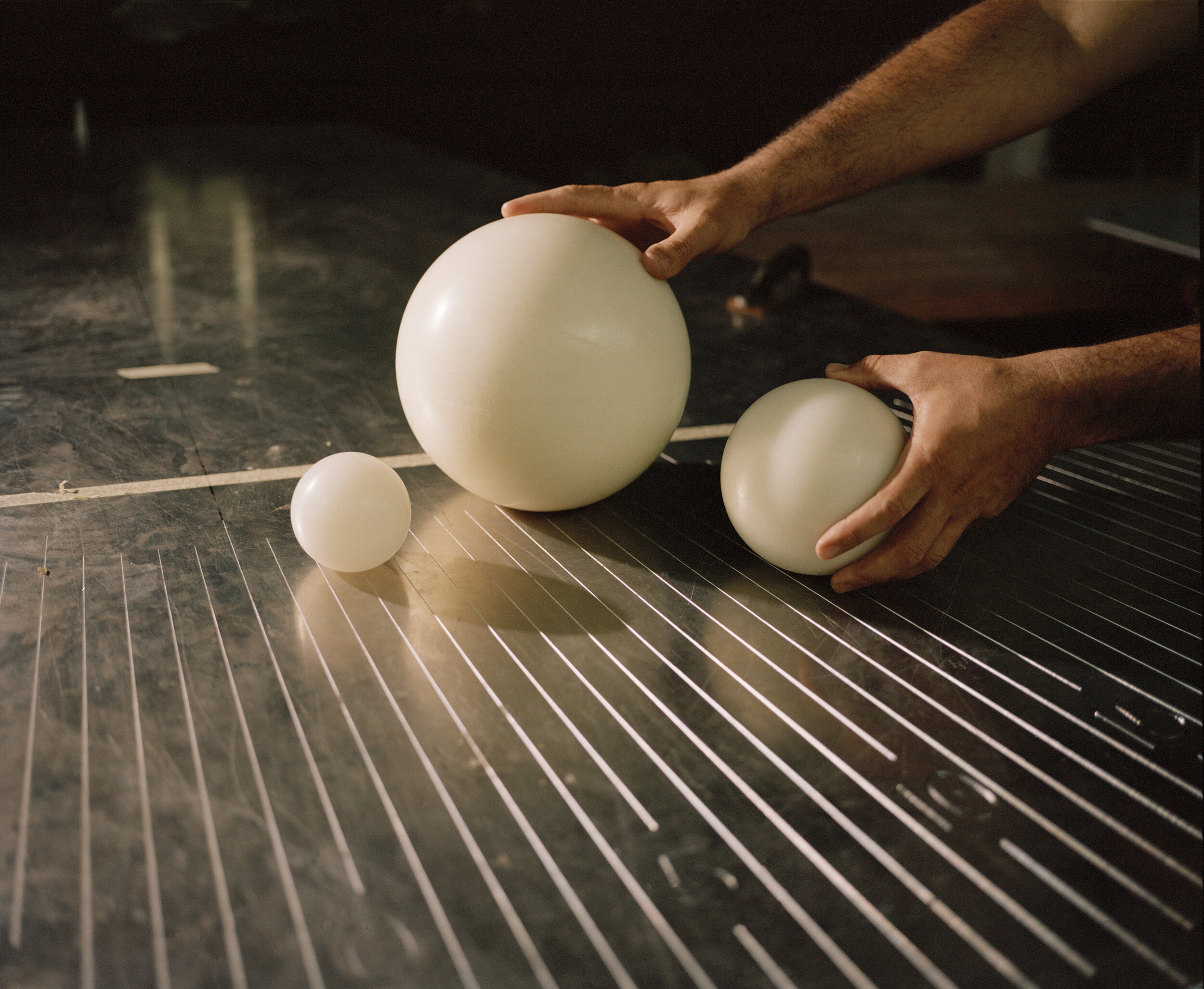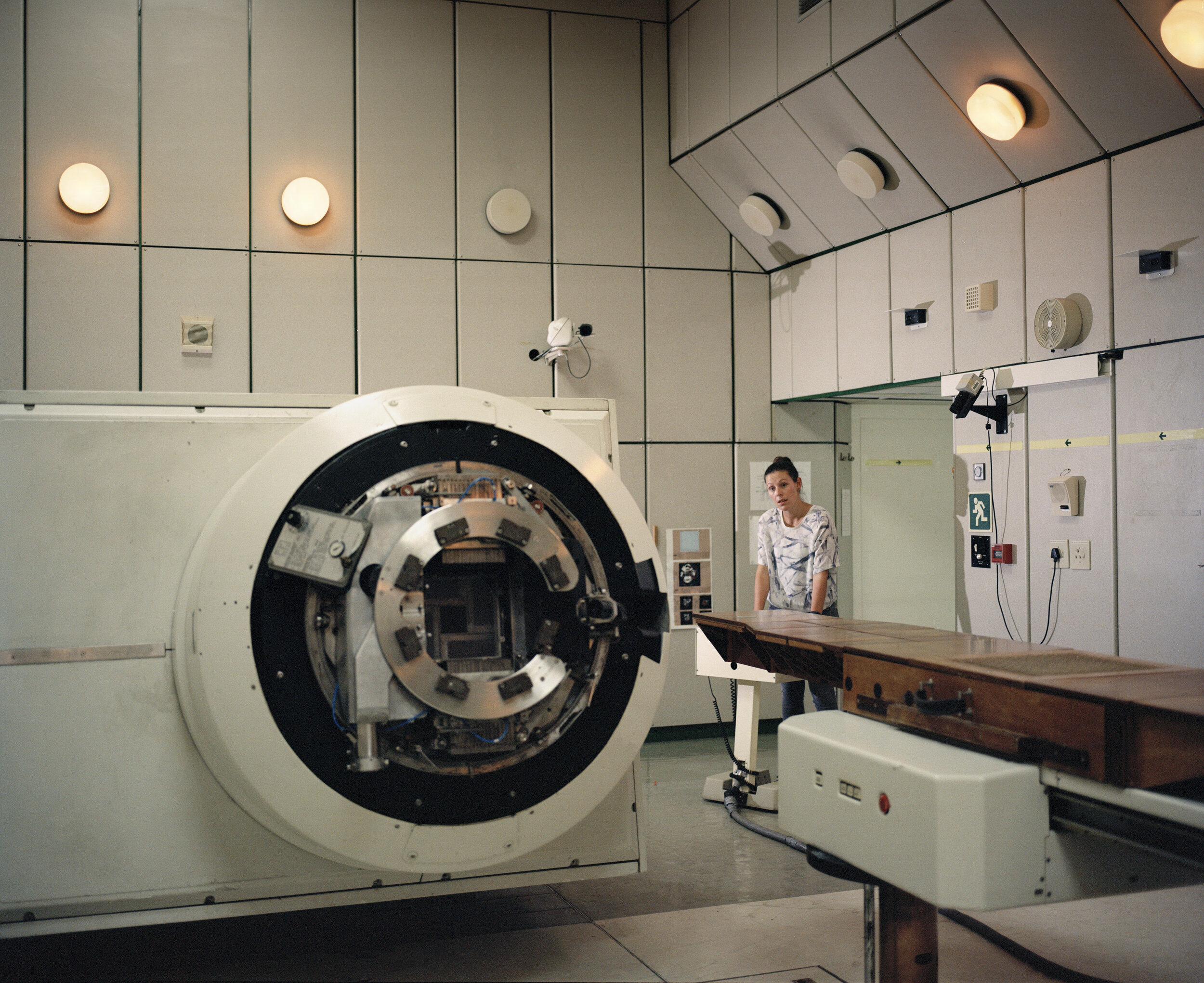'You have got a number of control systems together here... the interlock system it shows that the personnel, as well as the equipment, are safe. If anything does happen the interlock system PC will be aware of default. Anything highlighted in red shows that there is a problem here. Using the Interlock system we can track down the source of the area.'
'We radiate blood with neutrons because astronauts beyond our orbit are also exposed to neutrons. They are exposed to a very low dose for a very long term.'
Charlotte Vandervoorde, Researcher, IThemba LABS, Cape Town. The microscope is used to analyze radiation-induced DNA damage in cells. The microscope is scanning slides with irradiated cells to identify the breaks in the chromosomes which can result in mutations or cell death.
'The main goal is to understand how elements are created in the universe - everything is started after the big bang and from the big bang to the time where we have now the earth with the humans, with the vegetation, animals - there was a lot of time and during each sequence of the time new particles have been created, a new state of matter.'
Dr. Faïçal Azaiez, Director, iThemba LABS, Laboratory for Accelerator-Based Sciences
On background the Material Research Department (MRD).
This part is where the accelerated charged particles that haven’t interact with the target nuclei are stopped.
Dr Pete Jones in one of the experimental area at iThemba LABS checking the end of a beam line (called beam-dump). This part is where the accelerated charged particles that haven’t interact with the target nuclei are stopped.
Used to transport the signals generated by the focal-plane detectors of the K600 magnetic spectrometer at iThemba LABS.
‘As you have your brain that collects all of the information that your eyes process, here is the same thing, you have the detector, that are your eyes, and then you need something that process all the information.."
Dr. Luna Pellegri, Senior researcher, iThemba LABS
Quagga were all wiped out by pioneer hunters in South Africa in the 19th century. They were a subspecies of Zebra basically with a similar appearance, but their stripes become wider and disappear towards the back where it is also more of a brown colour. In 1987 a programme started to try and resurrect the Quagga using selective breeding. The only known photograph of a living one was taken by F.York at a London zoo in 1870.
The Zebra found on the grounds of the iThemba Lab (the largest facility of Africa for particle and nuclear research) is part of an ongoing programme to reintroduce the Quagga.
From ‘Swart ster oor die Karoo’ (Black star over the Karoo) by Jan Rabie, 1957. Eva Stellaris was sent as a helper from the future with an assignment to specifically help with biological and hydroponic work - as an attempt for humans to stay alive living underground as it was too cold above ground.
'So once the particle reach their maximum energy, then, they get extracted again, and get sent down to wherever we want them to go, for experiments or isotope production.'
Dr Ricky Smit is showing a schematic representation of the principle of acceleration of the charged particle through the Separated Section Cyclotron (SSC) at iThemba LABS.
‘The study on the response of cells to neutron irradiation is a crucial aspect for the feasibility of future human mission in space.’
Dr Charlot Vandevoorde is positioning the wooden table where the biological sample will be place for a neutron beam irradiation. The study on the response of cells to neutron irradiation is a crucial aspect for the feasibility of future human mission in space.
The old Van de Graaff accelerator, now substituted with a new Tandetron accelerator, is manly used for materials research such as nano-structures or composite materials studies.
‘This is where the interaction between the charged particles of the beam and the target nuclei take place. From the analysis of the reaction products it is possible to understand nuclear structure properties and interaction principles.’
—
'In other words, it's a place where we try to reproduce stars in a laboratory - stars are the place where there is a high density of protons, neutrons and from this high density, there are collisions that are going to create heavier elements. So this is what we are trying to do now, we are trying to reproduce what happens in stars, in the laboratory.'
Dr. Faïçal Azaiez, Director at iThemba LABS, Laboratory for Accelerator-Based Sciences.
‘You don't always have to look for something because it is useful for the next day. It's like for the sake of knowledge..."
‘BaGel (Ball of Germanium and LaBr) It is used to detect the de-excitation radiation (gamma rays) from nuclei excited via nuclear reactions. Nuclear structure studies have important impact in the understanding of astrophysical phenomena such as the dynamics of neutron starts and the production of heavy elements in the universe.’
Dr. Luna Pellegri, Senior Researcher, iThemba LABS
Vir die eerste maal kyk sy op, haar blik reguit en eerlik, maar haar stem treurig: “My opdrag was slegs en spesifiek die biologiese en hidroponiese werk wat ek hier in Saakni gedoen het. Asseblief, u beskik oor my lewe, maar nie oor my woorde nie."
For the first time, she looks up, her gaze straight and honest, her voice sad: “My assignment was only and specifically the biological and hydroponic work I did here in Saakni. Please, you have the power over my life, but not my words."
From ‘Swart ster oor die Karoo’ (Black star over the Karoo) by Jan Rabie, 1957.
Eva Stellaris was sent as a helper from the future. Part of her command involved only answering in a way that complements the knowledge that already exists and not help directly, “that man should, after all, help himself.”




















